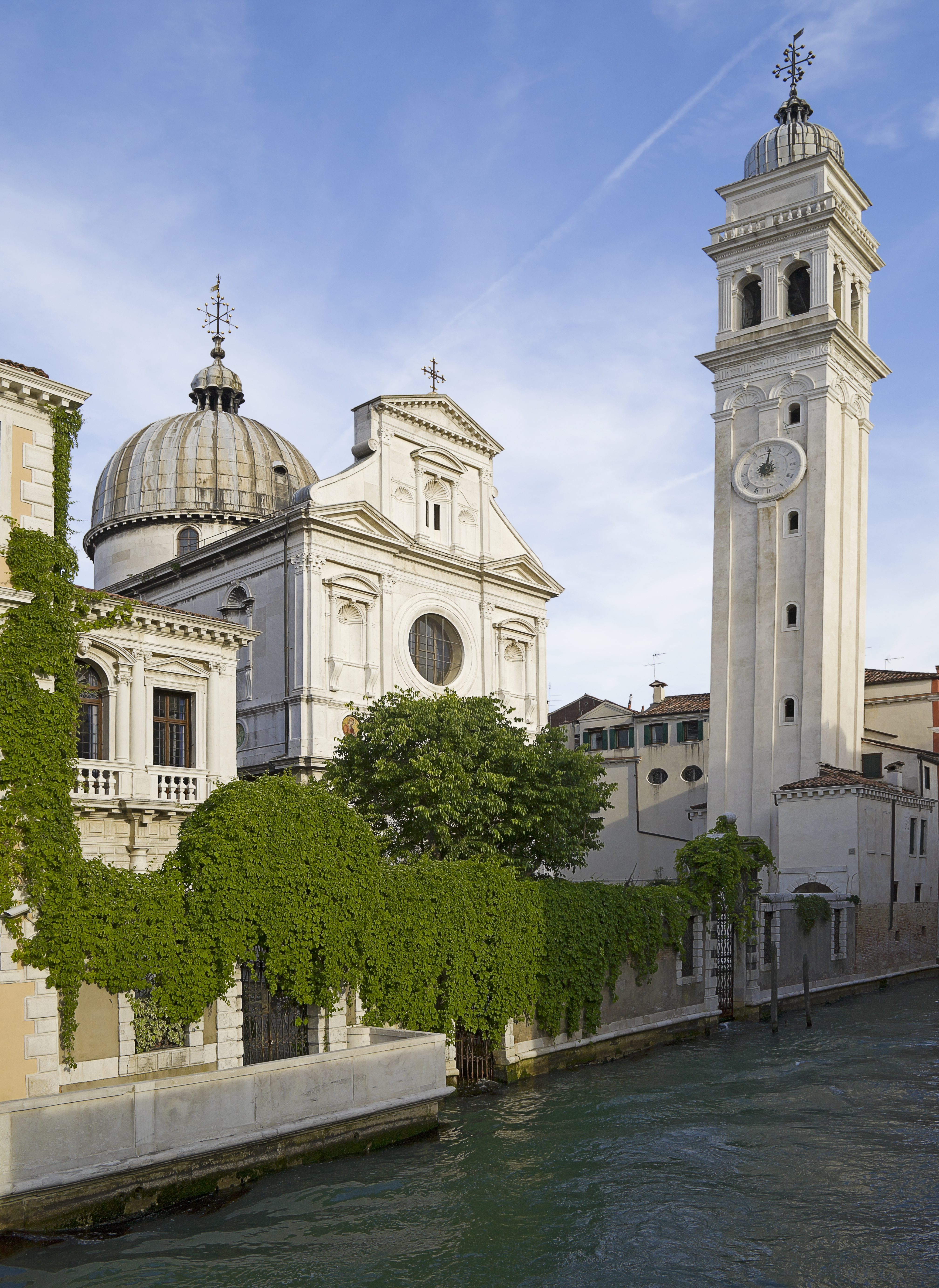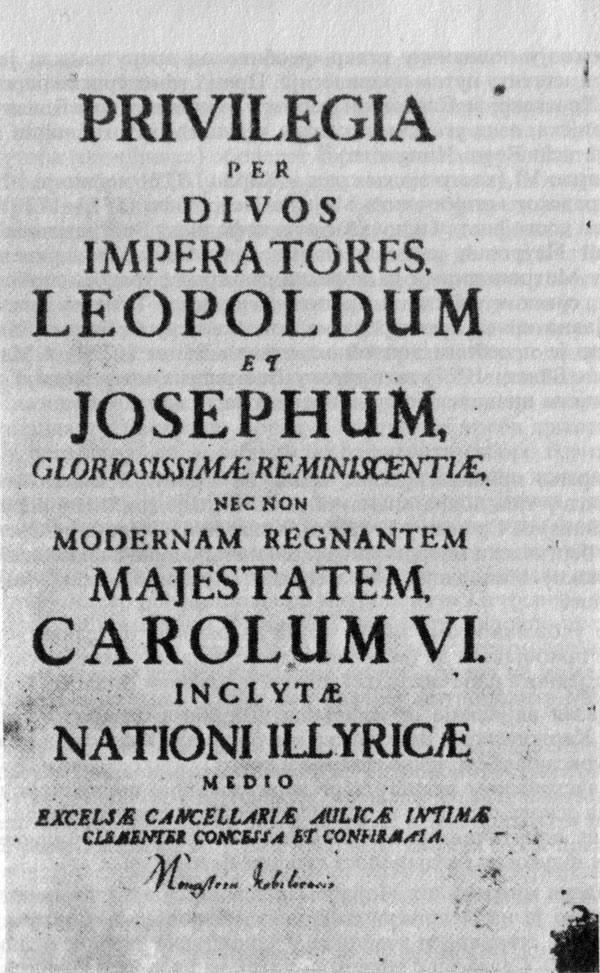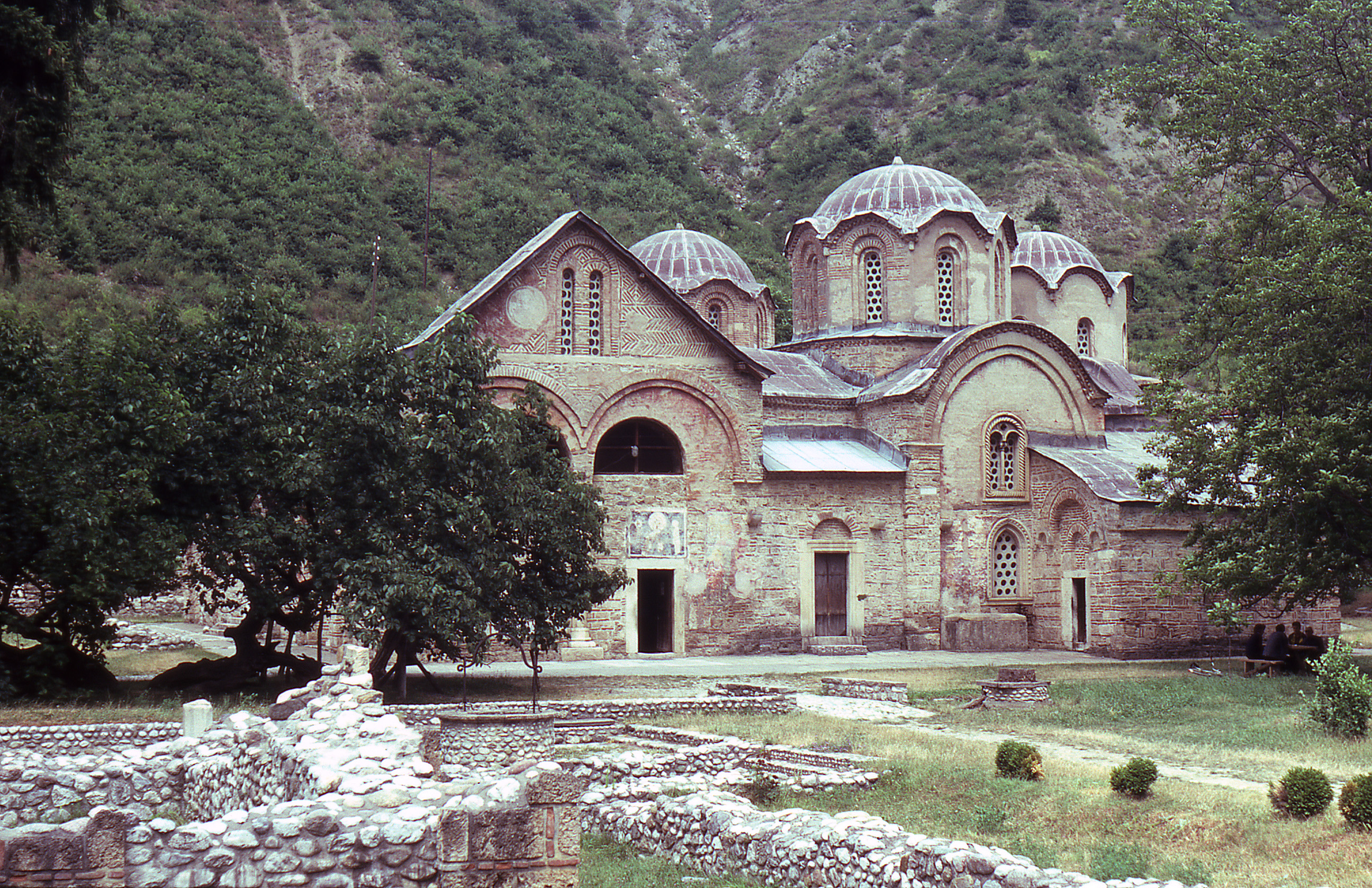|
Serbian Orthodox Eparchy Of Austria And Switzerland
The Serbian Orthodox Eparchy of Austria and Switzerland or Serbian Orthodox Diocese of Austria and Switzerland ( sr, ąĪčĆą┐čüą║ą░ ą┐čĆą░ą▓ąŠčüą╗ą░ą▓ąĮą░ ąĄą┐ą░čĆčģąĖčśą░ ą░čāčüčéčĆąĖčśčüą║ąŠ-čłą▓ą░čśčåą░čĆčüą║ą░) is an eparchy (diocese) of the Serbian Orthodox Church, created in 2011, with jurisdiction over Serbian Orthodox churches in Austria, Switzerland, Italy and Malta. Its headquarters are located in Vienna, Austria. Retrieved on 19 September 2016. "SERBIAN ORTHODOX CHURCH - DIOCESE OF AUSTRIA AND SWITZERLAND." History Serbian Orthodox Church has a long historical presence on the territory of modern Eparchy of Austria and Switzerland. By the end of the |
Serbian Orthodox Church
The Serbian Orthodox Church ( sr-Cyrl, ąĪčĆą┐čüą║ą░ ą┐čĆą░ą▓ąŠčüą╗ą░ą▓ąĮą░ čåčĆą║ą▓ą░, Srpska pravoslavna crkva) is one of the autocephalous (ecclesiastically independent) Eastern Orthodox Christian denomination, Christian churches. The majority of the population in Serbia, Montenegro and the Republika Srpska entity of Bosnia and Herzegovina are members of the Serbian Orthodox Church. It is organized into metropolis (religious jurisdiction), metropolitanates and eparchies, located primarily in Serbia, Bosnia and Herzegovina, Montenegro, and Croatia. Other congregations are located in the Serb diaspora. The Serbian Patriarch serves as first among equals in his church. The current patriarch is Porfirije, Serbian Patriarch, Porfirije, enthroned on 19 February 2021. The Church achieved Autocephaly, autocephalous status in 1219, under the leadership of Saint Sava, becoming the independent Archbishopric of ┼Įi─Źa. Its status was elevated to that of a patriarchate in 1346, and was kn ... [...More Info...] [...Related Items...] OR: [Wikipedia] [Google] [Baidu] |
Serbian Despotate
The Serbian Despotate ( sr, / ) was a medieval Serbian state in the first half of the 15th century. Although the Battle of Kosovo in 1389 is generally considered the end of medieval Serbia, the Despotate, a successor of the Serbian Empire and Moravian Serbia, lasted for another 60 years, experiencing a cultural and political renaissance before it was conquered by the Ottomans in 1459. Before its conquest the Despotate was a tributary state of the neighbouring Byzantine Empire, Ottoman Empire, and Kingdom of Hungary, all of which considered it to be part of their sphere of influence. After 1459, political traditions of the Serbian Despotate continued to exist in exile, in the medieval Kingdom of Hungary, with several titular despots of Serbia, who were appointed by kings of Hungary. The last titular Despot of Serbia was Pavle Baki─ć, who fell in the Battle of Gorjani. History Origins After Prince Lazar Hrebeljanovi─ć was killed in the Battle of Kosovo on June 28, 1389, his ... [...More Info...] [...Related Items...] OR: [Wikipedia] [Google] [Baidu] |
Religious Sees Of The Serbian Orthodox Church
Religion is usually defined as a social- cultural system of designated behaviors and practices, morals, beliefs, worldviews, texts, sanctified places, prophecies, ethics, or organizations, that generally relates humanity to supernatural, transcendental, and spiritual elements; however, there is no scholarly consensus over what precisely constitutes a religion. Different religions may or may not contain various elements ranging from the divine, sacred things, faith,Tillich, P. (1957) ''Dynamics of faith''. Harper Perennial; (p. 1). a supernatural being or supernatural beings or "some sort of ultimacy and transcendence that will provide norms and power for the rest of life". Religious practices may include rituals, sermons, commemoration or veneration (of deities or saints), sacrifices, festivals, feasts, trances, initiations, funerary services, matrimonial services, meditation, prayer, music, art, dance, public service, or other aspects of human culture. Religions hav ... [...More Info...] [...Related Items...] OR: [Wikipedia] [Google] [Baidu] |
Serbs In Italy
Serbs in Italy ( sr-Cyrl-Latn, ąĪčĆą▒ąĖ čā ąśčéą░ą╗ąĖčśąĖ, Srbi u Italiji; it, Serbi in Italia) or Italian Serbs ( sr-Cyrl-Latn, ąśčéą░ą╗ąĖčśą░ąĮčüą║ąĖ ąĪčĆą▒ąĖ, Italijanski Srbi) are a community numbering 46,958. History According to Graziadio Isaia Ascoli, the 19th century writer Giovanni de Rubertis considered the ''Schiavoni'' (Slavs) or ''Dalmati'' (Dalmatians) of Molise in Italy to be Serbs that were brought there by Skanderbeg during his Italian expedition in 1460ŌĆō1462, along with Albanians. In 1497, Italian court poet Rogeri de Pacienza di Nardo wrote about a group of Serbian refugees who left the Despotate of ─Éura─æ Brankovi─ć to settle in the village of Gioia del Colle near Bari, Italy. He describes how they sang and danced the ''kolo'' in honour of the Queen of Naples, Isabella del Balzo. The names of the singers that Pacienza wrote down are common Serbian names. In 1782, the first Serbian school opened in Trieste, and in the 19th century the Serbian Ortho ... [...More Info...] [...Related Items...] OR: [Wikipedia] [Google] [Baidu] |
Serbs In Switzerland
). Swiss law does not designate a ''capital'' as such, but the federal parliament and government are in Bern, while other federal institutions, such as the federal courts, are in other cities (Bellinzona, Lausanne, Luzern, Neuchâtel, St. Gallen a.o.). , coordinates = , largest_city = Zürich , official_languages = , englishmotto = "One for all, all for one" , religion_year = 2020 , religion_ref = , religion = , demonym = , german: Schweizer/Schweizerin, french: Suisse/Suissesse, it, svizzero/svizzera or , rm, Svizzer/Svizra , government_type = Federal assembly-independent directorial republic with elements of a direct democracy , leader_title1 = Federal Council , leader_name1 = , leader_title2 = , leader_name2 = Walter Thurnherr , legislature = Federal Assembly , upper_house = Council of States , lower ... [...More Info...] [...Related Items...] OR: [Wikipedia] [Google] [Baidu] |
Serbs In Austria
The Serbs in Austria are the second largest ethnic minority group in Austria, after Germans. The first wave of Serbs to Austria began in the early 19th century, while the largest wave was during the migrant worker program of the 1960s and 1970s. Serb immigration to Austria is still active today due to economic and familial factors. Like in most Western European countries, the Serb community in Austria consists mainly of Serbs from Serbia and Bosnia and Herzegovina. History Serbs have very long historical presence on the territory of modern Austria. By the end of the Middle Ages, migration of ethnic Serbs towards Austrian lands was caused by expansion of the Ottoman Empire. Exiled members of Serbian noble families were welcomed by Habsburg rulers, who granted them new possessions. In 1479, emperor Friedrich III granted castle Weitensfeld in Carinthia to exiled members of Brankovi─ć dynasty of Serbia. During the period of OttomanŌĆōHabsburg wars (from 16th to 18th century), Aust ... [...More Info...] [...Related Items...] OR: [Wikipedia] [Google] [Baidu] |
Eastern Orthodoxy In Italy
Eastern Orthodoxy in Italy refers to adherents, religious communities, institutions and organizations of Eastern Orthodox Christianity in Italy. In 2014, there were 14 distinctive Eastern Orthodox jurisdictions on the territory of Italy, some of them belonging to canonical Eastern Orthodox churches, while others are classified as independent (noncanonical). First session of the Council of Canonical Orthodox Bishops in Italy was held in 2009. The main canonical Eastern Orthodox churches and ecclesiastical jurisdictions in Italy are as follows: * Greek Orthodox Archdiocese of Italy (officially Sacred Orthodox Archdiocese of Italy and Exarchate of Southern Europe), a diocese of the Ecumenical Patriarchate of Constantinople, officially recognized by the Italian government under the otto per mille scheme, * Serbian Orthodox Vicariate of Italy, under the jurisdiction of Serbian Orthodox Eparchy of Austria and Switzerland, * Romanian Orthodox Diocese of Italy, a diocese of the Romani ... [...More Info...] [...Related Items...] OR: [Wikipedia] [Google] [Baidu] |
Eastern Orthodoxy In Austria
Eastern Orthodoxy in Austria refers to communities, institutions and organizations of the Eastern Orthodox Christianity on the territory of modern Austria. There are several Eastern Orthodox jurisdictions in Austria. As of 2019, it is estimated that there are some 400,000 to 450,000 Eastern Orthodox believers in Austria. Most of them are ethnic Serbs and Romanians. History By the end of the Middle Ages, migration of Eastern Orthodox Christians towards Austrian lands was intensified due to expansion of the Ottoman Empire in various regions of Southeastern Europe. Exiled members of Eastern Orthodox royal and noble families were welcomed by Habsburg rulers, who granted them new possessions. In 1479, emperor Friedrich III granted castle Weitensfeld in Carinthia to exiled members of Brankovi─ć dynasty of Serbia. Often accompanied by their priests, exiled noble families created first Eastern Orthodox cells in Austrian lands. During the period of OttomanŌĆōHabsburg wars (16th-18th ... [...More Info...] [...Related Items...] OR: [Wikipedia] [Google] [Baidu] |
Metropolitanate Of Karlovci
The Metropolitanate of Karlovci ( sr, ąÜą░čĆą╗ąŠą▓ą░čćą║ą░ ą╝ąĖčéčĆąŠą┐ąŠą╗ąĖčśą░, Karlova─Źka mitropolija) was a metropolitanate of the Eastern Orthodox Church that existed in the Habsburg monarchy between 1708 and 1848. Between 1708 and 1713, it was known as the Metropolitanate of Kru┼Īedol, and between 1713 and 1848, as the Metropolitanate of Karlovci. In 1848, it was elevated to the Patriarchate of Karlovci, which existed until 1920, when it was merged with the Metropolitanate of Belgrade and other Eastern Orthodox jurisdictions in the newly established Kingdom of Serbs, Croats and Slovenes to form the Serbian Orthodox Church. History During the 16th and 17th centuries, all of the southern and central parts of the former medieval Kingdom of Hungary (1301ŌĆō1526), Kingdom of Hungary were under Turkish rule and organized as Ottoman Hungary. Since 1557, Serbian Orthodox Church in those regions was under jurisdiction of the Serbian Patriarchate of Pe─ć. During the Great Turk ... [...More Info...] [...Related Items...] OR: [Wikipedia] [Google] [Baidu] |
Isaija ─Éakovi─ć
Isaija ─Éakovi─ć or Isaija I (Grabovac, near Stari Slankamen, Habsburg monarchy, 1635 ŌĆō Vienna, Habsburg Monarchy, 20 July 1708) was elected to the rank of Metropolitan of Kru┼Īedol ( Karlovci) in 1708. Isaija is best remembered as the first Serbian metropolite under Habsburg monarchy and for his diplomatic skills when he obtained the amendments in the Privileges. He was succeeded by Sofronije Podgori─Źanin. Biography ─Éakovi─ć was born in the village of Grabovac, near Stari Slankamen, located in today's In─æija municipality in the Syrmia District of Serbia. He graduated from elementary school, gymnasium and the Theological Seminary. He married his village sweetheart before being ordained in the priesthood. His wife died prematurely, and he gave up everything for Christ and accepted monasticism at the Kru┼Īedol Monastery. Later on, as an educated monk who spoke perfect German, he was elevated to the rank of Bishop of ''Jenopolje'' (Ineu in modern Romania). In Belgrade, in 16 ... [...More Info...] [...Related Items...] OR: [Wikipedia] [Google] [Baidu] |
Arsenije III Crnojevi─ć
Arsenije III Crnojevi─ć ( sr-cyr, ąÉčĆčüąĄąĮąĖčśąĄ III ą”čĆąĮąŠčśąĄą▓ąĖčø; 1633 ŌĆō 27 October 1706) was the Archbishop of Pe─ć and Serbian Patriarch from 1674 to his death in 1706. In 1689, during the Habsburg-Ottoman War (1683ŌĆō1699), he sided with Habsburgs, upon their temporary occupation of Serbia. In 1690, he left the Patriarchal Monastery of Pe─ć and led the Great Migration of Serbs from Ottoman Serbia into the Habsburg monarchy. There he received three charters (the "''Serbian Privileges''" of 1690, 1691, and 1695), granted to him by Emperor Leopold I, securing religious and ecclesiastical autonomy of Eastern Orthodoxy in the Habsburg Monarchy. In the meanwhile, after restoring their rule in Serbian lands, Ottomans allowed the appointment of a new Serbian Patriarch, Kalinik I (1691ŌĆō1710), thus creating a jurisdictional division within the Serbian Orthodox Church. Until death, in 1706, Patriarch Arsenije remained the head of Serbian Orthodox Church in Habsburg lands ... [...More Info...] [...Related Items...] OR: [Wikipedia] [Google] [Baidu] |
Vienna War (1683-1699)
The Great Turkish War (german: Gro├¤er T├╝rkenkrieg), also called the Wars of the Holy League ( tr, Kutsal ─░ttifak Sava┼¤lar─▒), was a series of conflicts between the Ottoman Empire and the Holy League consisting of the Holy Roman Empire, Poland-Lithuania, Venice, Russia, and Habsburg Hungary. Intensive fighting began in 1683 and ended with the signing of the Treaty of Karlowitz in 1699. The war was a defeat for the Ottoman Empire, which for the first time lost large amounts of territory, in Hungary and the PolishŌĆōLithuanian Commonwealth, as well as part of the western Balkans. The war was significant also by being the first time that Russia was involved in an alliance with Western Europe. The French did not join the Holy League, as France had agreed to reviving an informal Franco-Ottoman alliance in 1673, in exchange for Louis XIV being recognized as a protector of Catholics in the Ottoman regime. Initially, Louis XIV took advantage of the start of the war to extend Fra ... [...More Info...] [...Related Items...] OR: [Wikipedia] [Google] [Baidu] |






